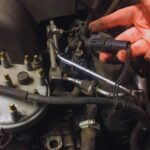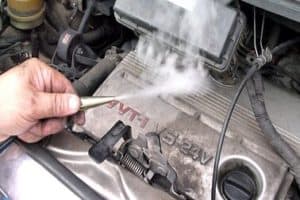A mass airflow sensor pertains to the amount of gas that gets into the fuel injection engine of your vehicle. However, the mass airflow can degrade and become faulty over time, leading to poor vehicle performance. In this case, you’ll have to take note of bad mass air flow sensor symptoms to maintain your vehicle’s performance.
3 of the most common symptoms of a bad mass air flow sensor are as follows:
- Lean Air Fuel Ratio
- Rich Air Fuel Ratio
- Acceleration Problems such as Hesitation, Jerking, or Stalling
Read on to learn more about the symptoms of a bad air flow sensor and how to fix these issues:
3 Most Common Symptoms of a Bad Mass Air Flow Sensor
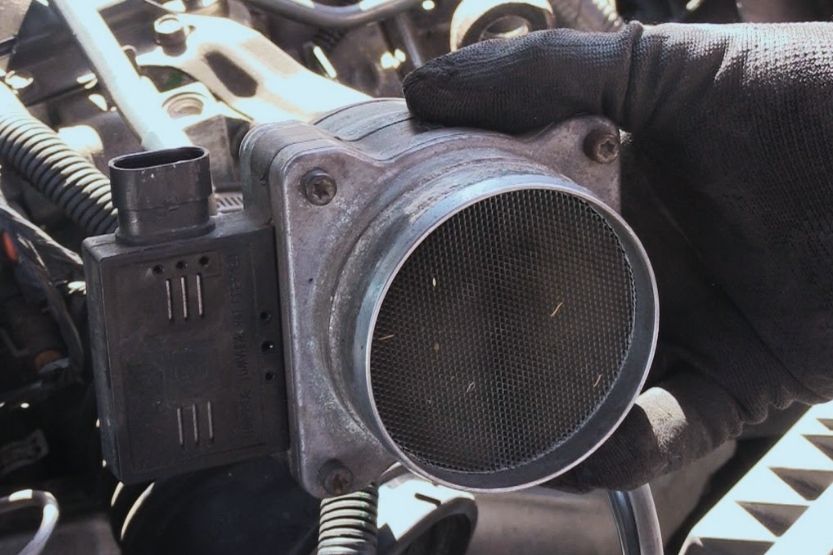
While numerous symptoms indicate you need to examine your mass air flow sensor, here are the three key signs to watch out for:
1. Lean Air Fuel Ratio
You may have heard of engine terms like running rich and running lean. These are two different concepts, but both are troublesome to your vehicle’s engine.
Too Much Air Present in the Combustion Chamber
When the engine runs lean, its combustion chamber has acquired too much air and is running low on fuel. You will get incorrect PCM data, resulting in underestimating the airflow needed.
So, you don’t overestimate the airflow but instead, underestimate your vehicle’s needed airflow. On the one hand, the condition can improve fuel efficiency.
However, this is only temporary, so you can’t let the state go on for too long.
Effects
Running lean for an extended period will seriously damage the vehicle in the long run. These damages to the vehicle may include the following:
- Check engine light
- Trouble starting
- Difficult engine seizures
- Engine surge or hesitation
2. Rich Air Fuel Ratio
Too Much Fuel and Very Minimal Air
For your vehicle to run without problems, it needs to have the right fuel-to-air ratio in every combustion cylinder. However, due to a damaged mass air flow sensor, your vehicle can have too much fuel and minimal air. This can also happen as a result of wires coated with dirt.
Consequently, the sensor finds it hard to measure the airflow and sends inaccurate details to the PCM by overestimating what is required. What happens is that the PCM releases more fuel than what the vehicle needs.
When you hear the term running rich, it pertains to the problem in the vehicle when each combustion cylinder lacks air, but the vehicle has more than enough fuel.
Signs
Here are the signs that the engine has this kind of problem:
- Check engine light
- Rough idling
- Having trouble with fuel efficiency
- Tailpipe releases black smoke
The most usual way to fix this problem is by cleaning the wires of the mass air flow sensor.
3. Acceleration Problems
Due to Combustion Chamber’s Untimed Detonations
The combustion chamber will have untimed detonations due to a bad mass air flow sensor’s overflowing of fuel left in it. You will notice this as problems happen during acceleration, including the following:
- Sudden jerking motions,
- Hesitations, and
- Other poor drivability factors.
Can Lead to Injuries When Ignored
You will likely notice the problems while driving your car downhill or you are speeding up on a ramp-up road on a highway.
This is why ignoring the problem or using the car without understanding if it shows signs of a bad mass air flow sensor could be dangerous.
It could likely lead to injury or accidents. Have an expert check it once you have observed the symptoms of a bad mass airflow sensor.
Have a Mechanic Inspect Your Car
If you notice these symptoms, your mass air flow sensor is faulty. However, this may not always be the case as some issues mimic bad MAF sensors.
Hence, there is a need for immediate evaluation if you have technical skills in handling engines. If not, turn the vehicle into a diagnostic center to undergo a complete computerized examination.
A qualified technician will examine the issue and perform the necessary adjustments and repairs. While the symptoms may sometimes be difficult to determine if you will only listen or observe the engine, it becomes easier and more efficient when using computer testing equipment.
What Is a Mass Air Flow Sensor
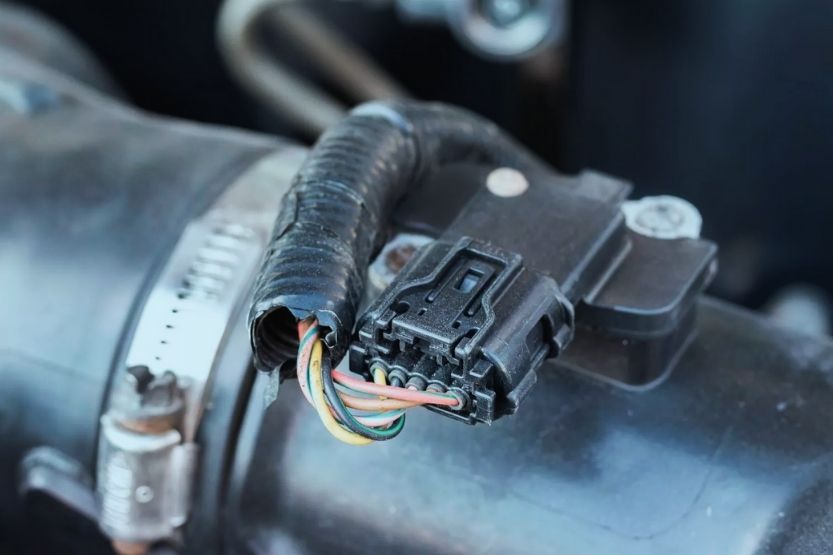
Installed Between the Engine’s Intake Manifold and Air Filter
The mass air flow sensor is installed between the engine’s intake manifold and air filter. While there are different MAF sensors, newer vehicle models utilize the hot-wire type.
Hot Wire Mass Airflow Sensor Includes a Small Electrically Heated Wire
The hot wire mass airflow sensor is a type of sensor that includes a small electrically heated wire. The air’s temperature close to the hot wire is measured through a temperature sensor installed.
A tiny amount of air goes around the hot wire when the engine is idle. This means the wire gets hot even when exposed to a low electric current.
By pressing the gas, the throttle opens, and more air gets to the hot wire, which is crucial in keeping the wire’s temperature down. As more air flows to the wire, more electrical current is required to keep the wires hot.
Airflow Should Be Proportional to the Electric Current
The ideal setup is when airflow is proportional to the electric current. You’ll find a small electronic chip inside the MAF sensor that translates the current into a digital signal.
Optimal Ration Between Air and Fuel
The sensor transmits the data to the PCM of the engine computer. The ratio between air and fuel needs to be kept at the optimal level to prevent problems.
The PCM would only determine how much fuel to inject based on the data sent by the mass air flow sensor.
In addition, the PCM determines the automatic transmission’s shift points based on the airflow readings. This means that the automatic transmission might improperly shift when there is a problem with the airflow sensor.
Car Brands with Mass Air Flow Sensor Issues
Some car brands encounter problems with mass airflow sensors more than others.
MAF sensor issues are common in car brands such as:
- Nissan
- Toyota
- Mazda
- Volkswagen
- GM
- BMW
Due to a Damaged or Contaminated Sensor Element
It typically happens as a result of a damaged or contaminated sensor element. There are cars whose engines crank but fail to start due to a failed mass air flow sensor.
Oversoaking the Washable Air Filter
The problem can be due to various reasons. For one, it can happen due to the oversoaking of the washable air filter. It can also be experienced sooner in engines with collapsed or incorrectly installed air filters.
Why do you need to watch out for the symptoms? When the mass air flow sensor is failing or contaminated, it experiences trouble measuring the right airflow.
It leads to drivability issues, including poor acceleration, lack of power, stalling, and not starting. When this happens, you will see the light come on the Service Engine Soon or Check Engine signs.
The PCM records and stores wrong data when the mass air flow sensor supplies it with confusing signals. This is what causes the Check Engine light to illuminate on the dash. You can use a scan tool to retrieve the trouble code.
MAF Sensor Codes
Here are the codes you need to take note of that have something to do with the MAF sensor:
- Mass Air Flow Circuit Intermittent – P0104
- Mass Air Flow Circuit High – P0103
- Mass Air Flow Circuit Low – P0102
- Mass Air Flow Circuit Range/Performance – P0101
- Mass Air Flow Circuit Malfunction – P0100
Due to a contaminated or bad MAF sensor, the other codes include System Too Lean Bank 2 (P0174) and System Too Lean Bank 1 (P0171).
Again, what are the symptoms of a damaged mass airflow sensor? The most common symptoms of a bad mass airflow sensor include the following:
- Hard to turn over or start the engine.
- Stalling engine
- Lean or rich idling
- Dragging engine
- Jerking during acceleration
How to Test the Mass Air Flow Sensor
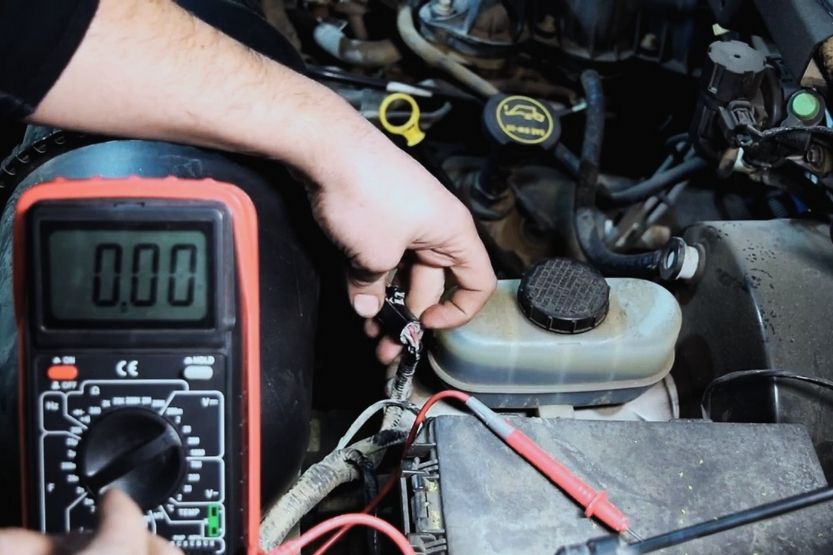
If you have a modern car, the only way to examine the MAF sensor is through a scan tool. When you have the engine checked by pros, they will base the readings of the mass air flow sensor at varying RPMs. They will then compare the result to good MAF sensor readings.
Mass air flow readings are typically measured when the engine is idle – from 1000 to 3000 RPM.
If you want to check the readings of the mass air flow sensor on your own, you can use a phone app to get this done. After downloading and installing the app, plug in the OBD connector using a Bluetooth adaptor.
Make sure that the terminals and wirings of the MAF sensor connector are thoroughly inspected.
There are instances when out-of-range air flow readings are caused by an improper electrical connection at the MAF sensor connector.
Factors That Affect MAF Sensor Readings
1. Damaged MAF Sensor
In most cases, a damaged or bad MAF sensor records lower air readings than a good MAF sensor.
However, there are other instances when a bad sensor can record higher readings.
2. Engine Volume
You will not get the same readings on different vehicles, and the airflow depends on the engine volume. You will get higher readings on a V8 or V6 engine.
3. Plugged Catalytic Converter
However, it would help if you did not readily conclude that the mass air flow sensor is bad when the MAF readings turn low. Other issues like a plugged catalytic converter or an air filter with obvious clogging affect the reading.
4. Vacuum Leaks
The mass air flow sensor readings can also be affected by vacuum leaks. This is why mechanics must compare the results’ readings using a good MAF sensor.
How to Clean a Dirty Mass Airflow Sensor
It is crucial to clean the mass air flow sensor every time you change oil or every six months.
This is important because most issues with the mass airflow sensor result from the accumulation of dirt and debris on the sensor head. This build-up can lead to poor performance, hence, regular cleaning.
To save money and time, you can clean the sensor whenever you clean or change your air filter.
Here are the steps to follow:
1. Remove the Mass Air Flow Sensor
Open your vehicle’s airbox and take out the mass airflow sensor. You can use a flathead screwdriver to remove the sensor. Be careful in the process and ensure that you don’t touch the small, delicate wires that can easily get broken.
If you break one wire, you will need to buy a replacement, costing at least $100. So, it is best to handle the task cautiously and ensure that you don’t touch or break the wires.
2. Clean the Mass Air Flow Sensor
You can perform a DIY cleaning on your own in two ways:
Use Rubbing Alcohol to Clean the Sensor
For this method, fill a plastic bag with rubbing alcohol and place the sensor inside the bag.
Shake and move the plastic bag until you are certain the liquid has washed all parts of the sensor and removed all grime and dirt.
Buy a Special MAF Cleaner
The other method uses a special MAF cleaner bought at a local auto parts store. This method is simple since you only need to spray it to the sensor to get it cleaned. Nonetheless, it is quite more costly than the previous method.
3. Reinstall the Mass Air Flow Sensor
Once the MAF sensor is clean, allow it to dry for 20 minutes before putting it back in the air intake duct. Use a screwdriver to secure the clamps of the air intake duct and reconnect the electrical connect r.
Before placing the sensor back, ensure it’s completely dry; otherwise, it may get damaged, and you may need to buy a replacement.
Conclusion – Symptoms of a Bad Mass Air Flow Sensor
3 of the most common symptoms of a bad mass air flow sensor are as follows:
- Lean Air Fuel Ratio
- Rich Air Fuel Ratio
- Acceleration Problems such as Hesitation, Jerking, or Stalling
Using the vehicle with a faulty mass airflow sensor causes the engine to perform poorly, leading to various problems, including the fast disintegration of the engine. Once you know the symptoms of a bad mass airflow sensor, it will be much easier to deal with the issue before it worsens.

![Mass Air Flow Sensor Cleaner [4 Top Picks] mass air flow sensor cleaner](https://roadsumo.com/wp-content/uploads/2021/07/mass-air-flow-sensor-cleaner-150x150.jpg)
![How to Fix a Bad O2 Sensor [Oxygen Sensor Repair] How to Fix a Bad O2 Sensor](https://roadsumo.com/wp-content/uploads/2021/10/how-to-fix-a-bad-O2-sensor-150x150.jpg)
![Bad Timing Belt Symptoms [6 Main Symptoms] Bad Timing Belt Symptoms](https://roadsumo.com/wp-content/uploads/2021/09/bad-timing-belt-symptoms-150x150.jpg)


